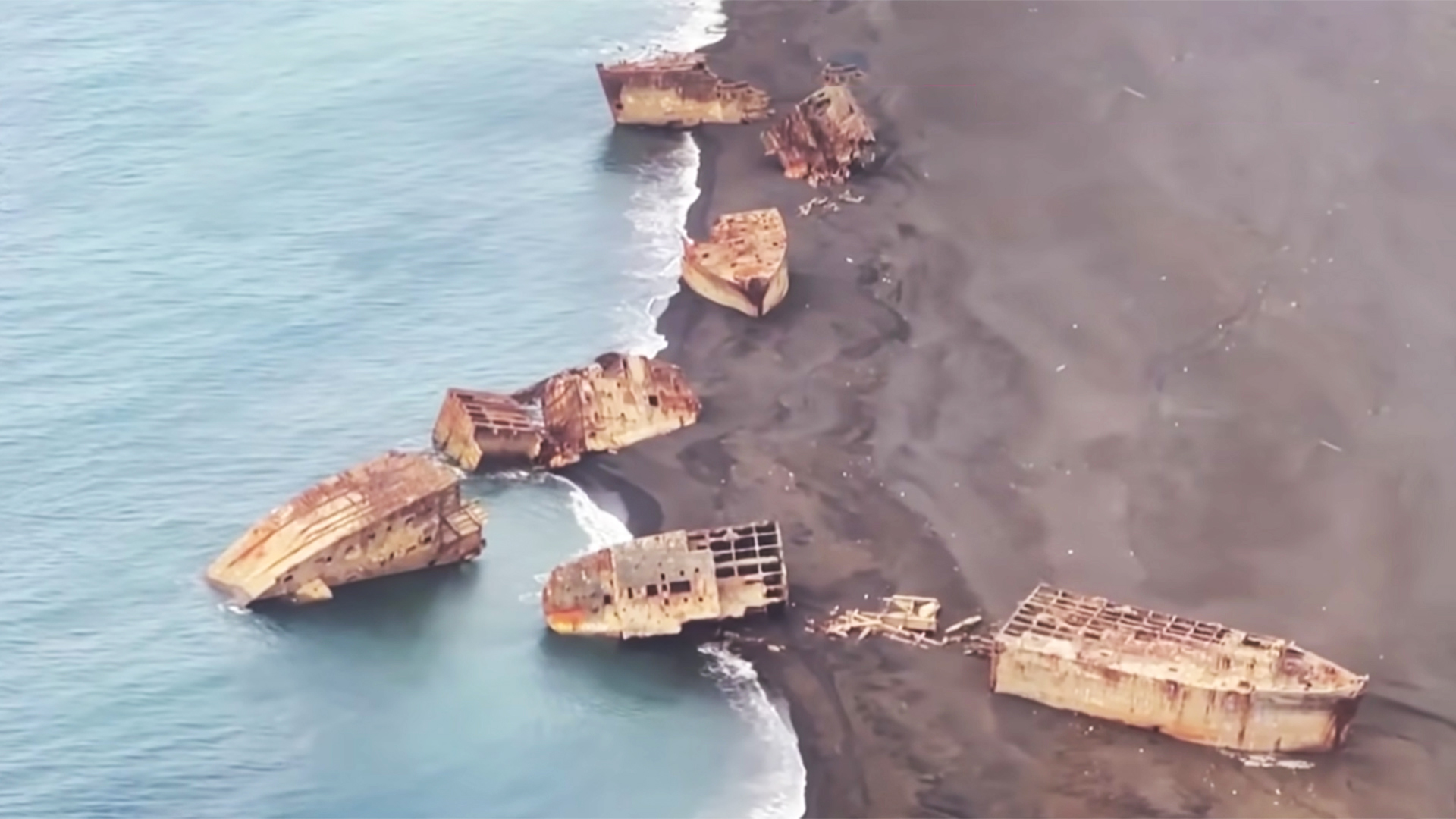

The Pacific Ocean’s Ring of Fire is one of the most seismically unstable regions in the world. Dotted with towering volcanoes and consistently troubled by earthquakes, it’s also the birthplace of an abundance of new islands—some temporary, others permanent—rising up out of the waves and continuing to grow. One such place is Iwo Jima, a spit of land south of Japan famous for the raging battle fought there between American and Japanese forces in 1945.
The war, of course, is very much over. But plate tectonics never stop. This month, a recent burst of seismic activity on the island, now known as Iō Tō in Japan, has lifted numerous WWII shipwrecks from the ocean, leaving them littered across a new black sand beach like ruins from Planet of the Apes. Three-quarters of a century after the fighting ceased, ghosts of the conflict that defined the modern world are still emerging from the blue waters of the Pacific.

To be clear, these ships aren’t victims of a battle; instead, the U.S. Navy intentionally scuttled them at the location in 1945 after taking the island in an attempt to create an artificial breakwater for a planned harbor. Several of them are reinforced concrete barges, ships built to support naval operations and not necessarily for any direct combat role. Four of them are former cargo vessels, at least one of which is Japanese according to naval documents. As the island rises by between 10 and 30 inches per year—the beach where U.S. forces landed in 1945 is now over 50 feet above sea level—they are “moving” from offshore relics to eerie onshore monoliths.




Likewise, it’s stated in this source from the National Archives that on June 13th, 1945, the final leg of the breakwater was completed when “Concrete Barge #30 [was] sunk in modified position Love… thus completing all three legs of the Iwo Jima Blockship Breakwater.”
Below, you can see their progression out of the water and onto the shore—or rather, the progression of the shoreline out into the ocean. The first image was taken back in 2005, while the last picture was snapped just five months ago.





Also below, you can see contemporaneous documents detailing the layout of the breakwater. When these documents were published and these photos were taken, the structure had yet to be completed. Thanks to research by maritime history enthusiast Erlend Bonderud, we know the identities of the four non-concrete ships used to form the north and south ends of the small artificial harbor. They are the IJN Toyotu Maru, the Chetvertyi Krabalov, the Caliche, and the Gilyak. The Toyotu Maru was a former Imperial Japanese Navy craft, presumably seized by the Americans.
The three other boats were previously lent to the USSR and served a variety of purposes before being taken back by the U.S. Navy and utilized in the project on Iwo Jima. The rest are concrete barges of various types.



We’re able to confirm that several ships are reinforced concrete barges not only because of up-close photography that reveals their composition, but also because of archival records and first-hand accounts from operations on the island during the war. In a digitized portion of his book In Search of Angels, the late Staff Sergeant Arvin S. Gibson reported that On March 17, 1945, the Seabees (Naval Construction Battalions) were going to “sink some old concrete ships out from the beach to provide a breakwater for our DUKW operations,” a DUKW being a popular type of light amphibious vehicle used for marine landings. They had trouble in rough ocean waters, and a breakwater would’ve made landing them much easier.
Likewise, it’s stated in this source from the National Archives that on June 13th, 1945, the final leg of the breakwater was completed when “Concrete Barge #30 [was] sunk in modified position Love… thus completing all three legs of the Iwo Jima Blockship Breakwater.” However, a typhoon blew through in short order and severely damaged the structure being built around them. The project was abandoned as a result.
Since the entire island of Iwo Jima is rarely visited by civilians, the ships have been untouched for decades. It’s unlikely they will ever be cut up for scrap. Eventually, all of them will sit firmly on land, the massive decaying structures serving as a reminder of a worldwide conflict that concluded more than 75 years ago.
Got a tip or question for the author? You can reach them here: peter@thedrive.com